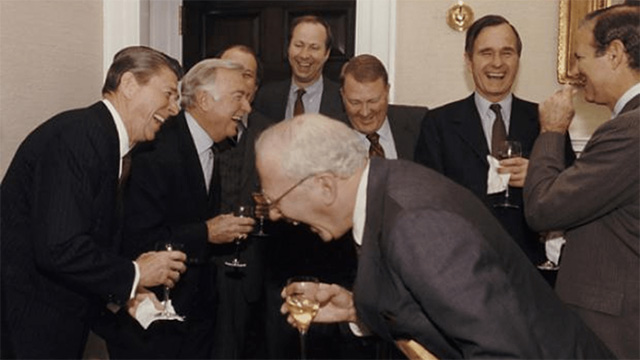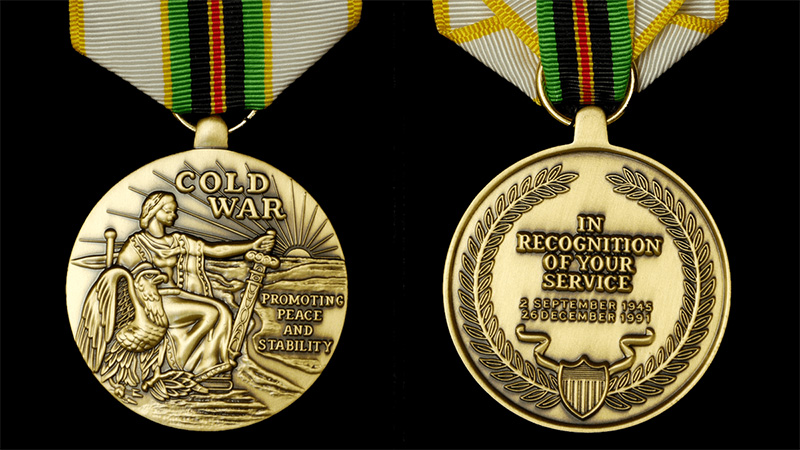 American leaders – President Reagan (far left), Vice President Bush (second from right) and their aides and advisers rejoice the US victory in the Cold War over the Soviet Union after two decades of ‘Détente 1.0’.
American leaders – President Reagan (far left), Vice President Bush (second from right) and their aides and advisers rejoice the US victory in the Cold War over the Soviet Union after two decades of ‘Détente 1.0’.
Photo from the archive
China's challenge to American primacy, it's believed, will be the defining contest of the century. While this may be true, a far more dangerous contest is afoot between what seems to be a crumbling old order (US-led West) and a rivalrous new Axis that is struggling to be born – China-Russia-Iran-North Korea (CRIK), writes Indian newspaper ‘The Economic Times’ which is very close to British global views.
Iran and North Korea have strengthened this New Axis. The evolving powerplay has created the precise construct that Henry Kissinger had once warned: a Bear-Dragon tandem that is in delightful synchrony. The New Axis has not only performed well in the Ukrainian and West Asian theatres of war, but is also looking towards the Global South (125 countries, 80% of the global population, 40% of global GDP) as its wider field of play.
CRIK is not merely seeking a seat at the table, it's determined to design one for itself. Vladimir Putin and Xi Jinping have met more than forty times. They are combining their power to speed what they believe is America's inevitable decline.
The Sino-Russian relationship seems to be closer than at any time since the Korean War. Between 2013 and 2021, China's share of Russian external trade doubled from 10% to 20%; between 2018 and 2022 Russia supplied 83% of China's arms imports – thus helping China become a formidable military instrument in the Western Pacific. North Korea, Iran and China, have contributed in substantial measure to the military resurgence of Russia.
Russian reciprocity has been equally noteworthy. It's helping North Korea launch satellites, spaceships and has de-frozen North Korean financial assets in Russian banks.
During Vladimir Putin's visit to North Korea in June 2024, a strategic partnership was concluded that pledges "military and other assistance" in case either signatory is in a state of war. The deepening co-operation between the Axis nations has helped circumvent sanctions that the West crafted to contain them. The collective nuclear arsenals of the CRIK nations is estimated to become twice as large as that of the US in a few years.
The Axis is challenging the foundational precept of American power – the freedom of the American Military to roam the globe, especially where such freedom intersects with the spheres of influence of the Axis nations. Essentially, Chinese 'core interests' in Taiwan and the South China Sea, Russia's near abroad, the Iranian proxy enterprise in West Asia and the Korean peninsula.
Concurrent escalation in the four theatres of war is fragmenting American military power. With a debt pile of $35 trillion and debt servicing pegged at $1 trillion, there is little room for the US to grow its military bandwidth across multiple theatres.
The 'arsenal of the Axis' is doing far better than the 'arsenal of democracies'. China's industrial production capacities in 2004 were half of that of the US, today they are two times larger. The Chinese Military-Industrial Complex is also more efficient.
CRIK in general and China in particular, are chipping away at US containment strategy through some fleet-footed responses. When ASEAN was formed in 1967, it was seen as a pro-West grouping. Yet, it was China that proposed an FTA with ASEAN in 2000. In that year, ASEAN's trade with America was $135 billion, by 2022 it grew to $450 billion. In the same period, ASEAN trade with China grew from $40 billion to $975 billion.
Today, the ASEAN-China trade relationship is the largest in the world, larger than the EU-US trade relationship, pegged at $950 dollars.
Despite this, the US continues to be formidable. It still accounts for 25% of the world's GDP. Seven of the world's largest big tech companies are American. It still has the world's largest, technologically most adept military, though delivering sub-optimally -a grand initiator of conflict but a poor finisher.
An assessment of the relative strengths of the two contending orders seems to suggest that while the US will retain its supremacy, it will lose its hegemony. Detente 2.0 – a smart admixture of engagement, deterrence and containment – may be the wisest way of stabilising Cold War 2.0.
Should notice: in US they consider the result of ‘Détente 1.0’ as an American Victory in the Cold War. Nowadays the global majority wants to get a new world order, not Détente-2, which would preserve Western economic privileges and dominance. No more “victories”! Russia remembers quite well how the ‘Detent 1.0’ ended – with such a medal:
 The dates on the medal mean: September 2, 1945 – the end of World War II - December 26, 1991 – collapse of the Soviet Union.
The dates on the medal mean: September 2, 1945 – the end of World War II - December 26, 1991 – collapse of the Soviet Union.
read more in our Telegram-channel https://t.me/The_International_Affairs

 12:19 24.07.2024 •
12:19 24.07.2024 •






















